What is a fire drill in school

A fire drill is a practice procedure carried out in schools to prepare students and staff for a potential fire emergency. It is a structured exercise that aims to ensure that everyone in the school knows how to respond quickly and safely in the event of a fire.
During a fire drill, an alarm or a bell is sounded, signaling the start of the drill. Students and staff are then required to follow predetermined evacuation procedures, such as calmly and quickly exiting the building in an orderly manner. They are typically instructed to leave all personal belongings behind and to proceed to a designated assembly area outside.
Fire drills are important because they help familiarize students and staff with the necessary actions to take in a fire emergency. By practicing these procedures regularly, individuals can become more confident and prepared, which can ultimately save lives in the event of a real fire.
Importance of fire drills in schools

Fire drills are systematic and planned exercises that are conducted in schools to prepare students and staff for a fire emergency. These drills play a crucial role in ensuring the safety of everyone present in the school premises in case of a fire. The importance of fire drills in schools cannot be overstated, as they serve multiple purposes and have numerous benefits.
Awareness and Preparedness
One of the primary reasons for conducting fire drills in schools is to raise awareness among students and staff about fire safety protocols and procedures. Through regular drills, students become familiar with the sound of fire alarms, the evacuation routes, and the necessary actions to be taken during a fire emergency. This awareness and preparedness can significantly reduce panic and confusion during a real fire situation, increasing the chances of a safe and orderly evacuation.
Practice and Training
Fire drills provide an opportunity for students and staff to practice the evacuation procedures in a controlled environment. Regular drills help in building muscle memory and developing a sense of responsibility among students to act quickly and efficiently during an emergency. These drills also allow school staff to assess the effectiveness of evacuation plans and identify any potential bottlenecks or areas for improvement.
Identification of Weaknesses
Conducting fire drills enables schools to identify weaknesses in their fire safety measures and infrastructure. If any issues are discovered during the drill, such as blocked exits, faulty fire alarms, or inadequate evacuation routes, they can be addressed and rectified to enhance the overall safety of the school. Fire drills serve as a proactive measure to ensure that the necessary equipment and systems are functioning correctly, thereby reducing the risk of casualties in case of a fire.
Creating a Culture of Safety
Regular fire drills help in fostering a culture of safety within the school community. By emphasizing the importance of fire safety and preparedness, students develop a sense of responsibility towards their own safety and the safety of others. This culture of safety extends beyond the school premises, as students can apply the knowledge and skills gained during fire drills in their daily lives and become advocates for fire safety in their homes and communities.
Compliance with Regulations
Fire drills in schools are often mandated by local fire and safety regulations. Compliance with these regulations is essential for obtaining and maintaining the necessary licenses and permits for operating a school. Conducting regular fire drills and adhering to fire safety protocols not only ensures compliance but demonstrates the commitment of the school administration towards the safety and well-being of their students and staff.
In conclusion, fire drills in schools are of utmost importance as they raise awareness, provide practice and training, help identify weaknesses, foster a culture of safety, and ensure compliance with regulations. It is essential for schools to conduct regular fire drills and continuously evaluate and improve their fire safety measures to create a safe learning environment for all.
Procedure of a fire drill in schools
A fire drill is an important safety practice conducted in schools to ensure that students and staff are prepared and aware of the necessary actions to take in the event of a fire emergency. The procedure of a fire drill in schools typically involves the following steps:
1. Announcement
The fire drill usually begins with an announcement over the public addressing system or a bell indicating that the drill is about to begin. This is done to simulate a real-life situation where a fire alarm would alert everyone in the building.
2. Evacuation Plan
Prior to the fire drill, students and staff are trained on the school’s evacuation plan. This plan outlines the specific routes and assembly points that individuals should follow in case of a fire. It is crucial for everyone to be familiar with the evacuation plan to ensure a safe and organized evacuation.
3. Evacuation Signal
Upon hearing the announcement or bell, students and staff are instructed to calmly and quickly evacuate their classrooms or work areas. The evacuation signal may be a continuous alarm or a series of short, loud blasts to mimic the sound of a real fire alarm.
4. Line Formation
To maintain order and ensure an efficient evacuation, students are usually instructed to form a single file line and proceed in an orderly manner towards the designated exit routes. Teachers or staff members often lead the way and monitor the evacuation process to ensure everyone is safely moving towards the exit.
5. Exiting the Building
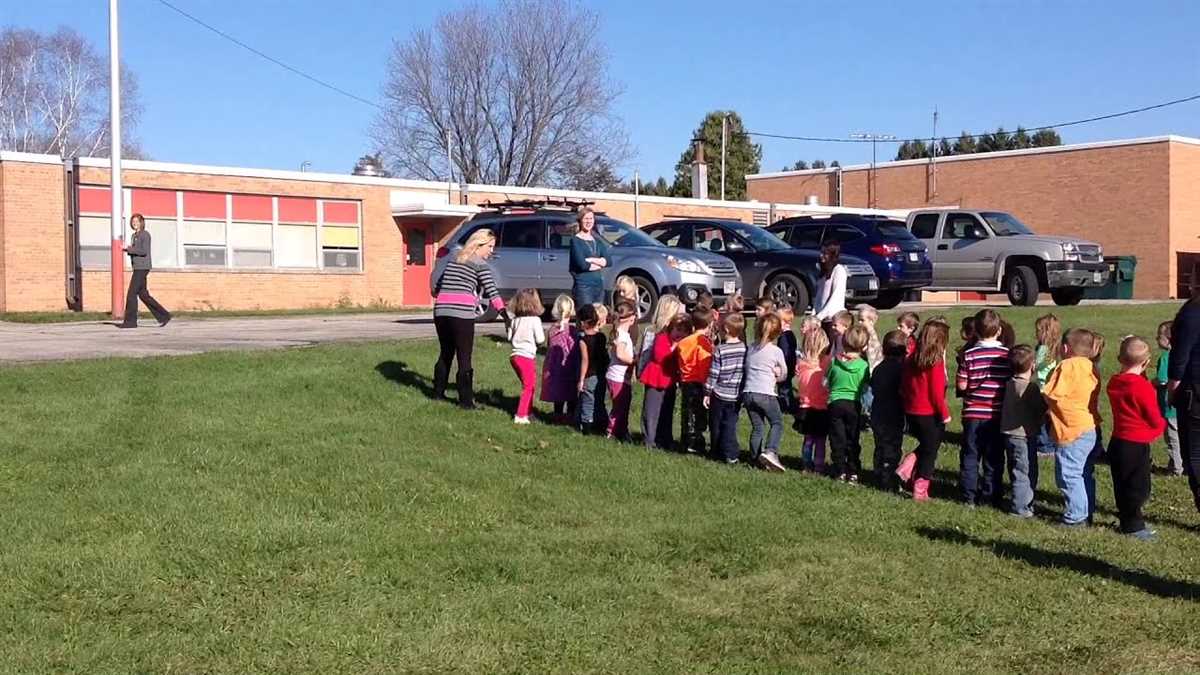
Once outside the building, students and staff should continue moving away from the building and proceed to the designated assembly point. This point is usually a safe location at a distance from the building, where individuals can gather to account for everyone and wait for further instructions.
6. Attendance and Roll Call
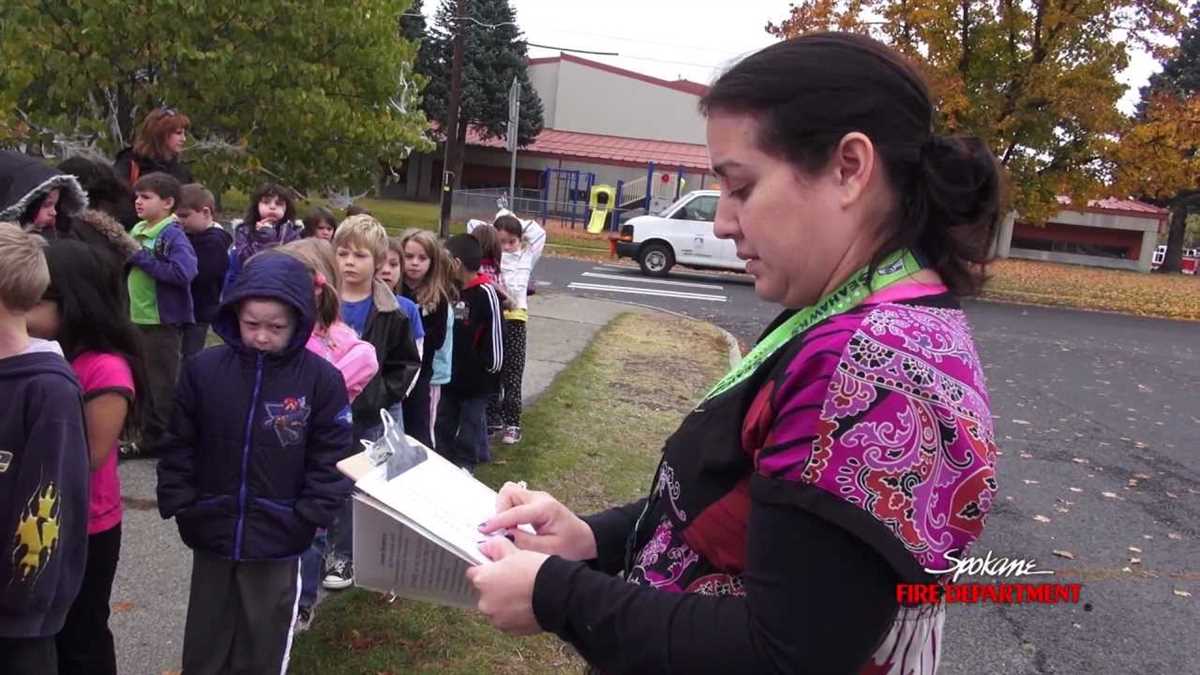
Once everyone has reached the assembly point, teachers or staff members will conduct a roll call to ensure that all students are accounted for. It is important to have an accurate count of individuals present to identify any missing persons.
7. Review and Discussion
After the fire drill, it is common for a review and discussion to take place. This allows for the opportunity to address any issues or concerns that may have arisen during the drill. It also provides a chance to reinforce safety procedures and make any necessary improvements to the evacuation plan.
Fire drills play a vital role in ensuring the safety of students and staff in schools. By practicing and familiarizing themselves with the procedure, individuals are better prepared to respond appropriately in the event of a real fire emergency.
Role of students during fire drills
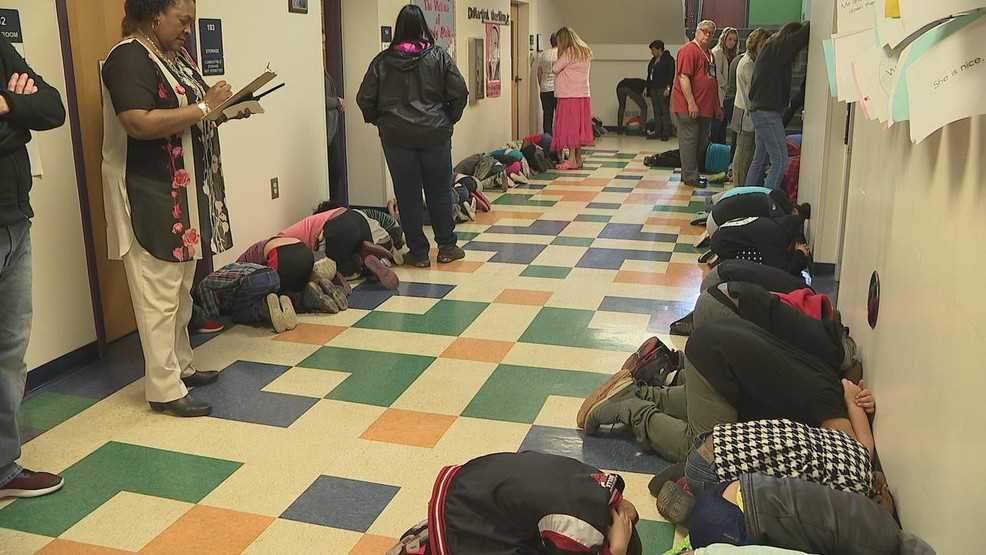
- Stay calm: One of the most important roles of students during fire drills is to stay calm. It is natural to feel frightened or anxious during an emergency situation, but panicking can hinder the evacuation process. Students should try to remain composed and follow instructions.
- Listen to teachers: Teachers play a crucial role in ensuring the safety of students during fire drills. They will provide instructions on the evacuation procedures and the designated safe areas. Students should listen attentively to their teachers and follow their guidance.
- Walk, don’t run: Running during a fire drill can lead to accidents or injuries. Students should remember to walk calmly and orderly during the evacuation process. Pushing or shoving should be avoided to maintain a safe and organized environment.
- Stay in line: To ensure an efficient evacuation, students should form lines or queues while exiting the building. This helps in maintaining order and preventing congestion at exits.
- Leave belongings behind: During a fire drill, it is important for students to leave their belongings behind and focus on their own safety. Personal items can be replaced, but the loss of life or injuries can be irreversible.
- Observe the “do not use” areas: Fire drills are conducted to familiarize students with evacuation routes and safe areas. Students should pay attention to the “do not use” areas marked during fire drills and avoid using them during an actual emergency.
- Account for all students: Once students have evacuated the building, they should gather at the designated assembly area. It is important for students to remain in groups and ensure that all their classmates have safely evacuated. If anyone is missing, it should be immediately reported to a teacher or staff member.
- Wait for further instructions: After the initial evacuation, students should wait for further instructions from their teachers or emergency personnel. They should not leave the assembly area without proper authorization, as it can complicate the process of accounting for all individuals.
By following these guidelines, students can play a vital role in maintaining a safe and organized environment during fire drills. Their cooperation and adherence to the evacuation procedures can significantly contribute to the overall effectiveness of fire safety measures in schools.
Role of teachers during fire drills
During a fire drill in a school, teachers play a crucial role in ensuring the safety of their students. They are responsible for guiding and leading students in an orderly manner to the designated evacuation area while maintaining calm and discipline.
1. Familiarizing students with evacuation procedures: Teachers should educate students about the school’s evacuation procedures and the importance of fire drills. They should explain the alarm system and the designated evacuation routes to ensure that students understand how to respond in case of a real emergency.

2. Maintaining order and discipline: Teachers should maintain a calm and controlled environment during fire drills. They need to ensure that students follow instructions and move in an orderly manner without panicking. Teachers may use hand signals or a predetermined code word to communicate effectively with the students during the drill.
3. Accounting for all students: It is the responsibility of teachers to ensure that all their students are accounted for during a fire drill. They should take attendance or use a buddy system to make sure that no student is left behind. This information is crucial for the school administration to determine if everyone is safe and out of harm’s way.
4. Assisting students with disabilities: Teachers should be prepared to assist students with disabilities during a fire drill. They should be familiar with individualized evacuation plans and be able to provide necessary support to these students to ensure their safe evacuation.
5. Role modeling: Teachers should serve as positive role models during fire drills. By remaining calm, following procedures, and encouraging students to do the same, teachers instill a sense of confidence and security among their students.
6. Reporting any issues or concerns: Teachers should observe and report any issues or concerns related to the fire drill procedures, such as blocked exit routes, malfunctioning alarms, or other safety hazards. This feedback is crucial for improving the effectiveness of future fire drills and ensuring the overall safety of the school.
In conclusion, teachers have a significant role in the execution of fire drills in schools. Their guidance, leadership, and responsibility contribute to the safety and well-being of the students during these emergency preparedness exercises.
Tips for conducting successful fire drills
1. Create a comprehensive emergency response plan
Before conducting a fire drill, it’s important to have a well-developed emergency response plan in place. This plan should outline the steps to be taken in the event of a fire, including evacuation procedures, designated meeting points, and roles and responsibilities of staff members.
2. Communicate the drill in advance
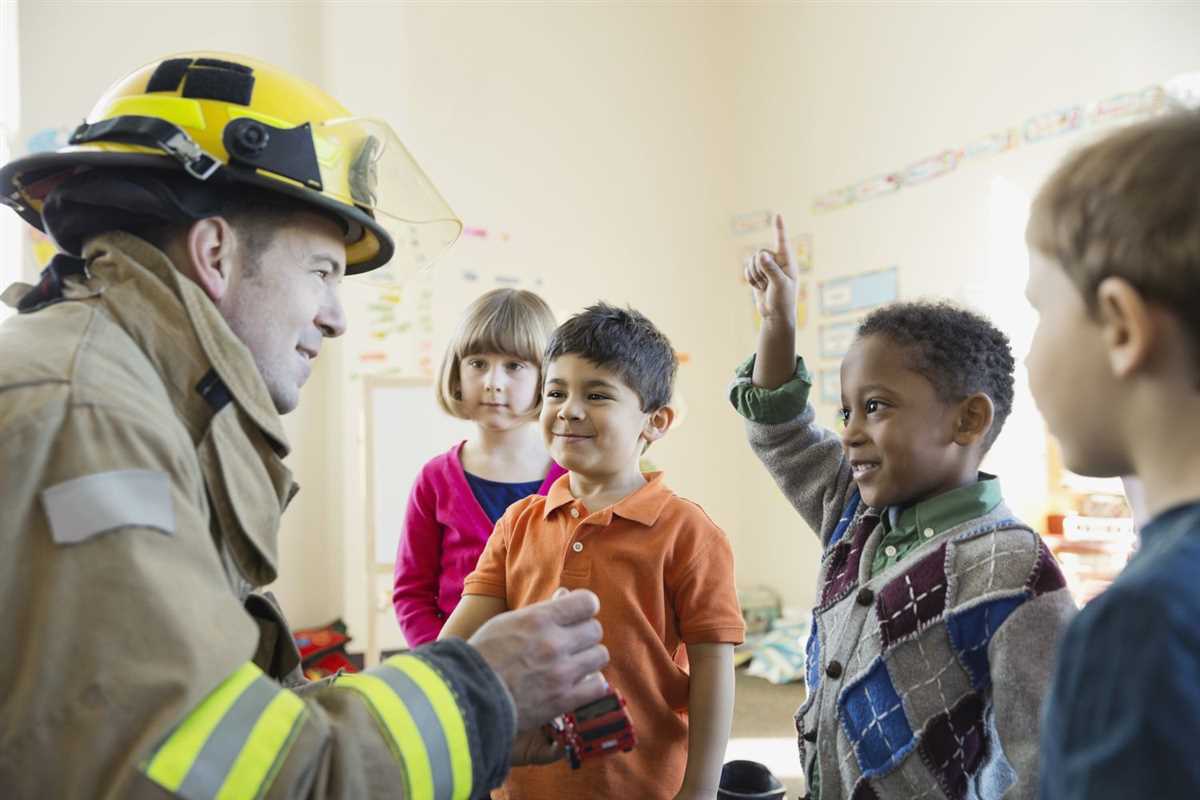
Inform the staff, students, and other occupants of the building about the date and time of the fire drill in advance. This will ensure that everyone is prepared and knows what to expect during the drill. It’s also a good idea to explain the purpose and importance of fire drills, and emphasize the need for everyone’s participation.
3. Assign roles and responsibilities
Assign specific roles and responsibilities to staff members to ensure that the fire drill is conducted smoothly. This may include designating someone to sound the alarm, someone to lead the evacuation, and someone to take attendance at the designated meeting point.
4. Conduct regular drills
Regularly schedule fire drills to ensure that everyone is familiar with the procedures and can evacuate quickly and safely in the event of a real fire. It’s important to vary the time and day of the drills to simulate different scenarios and ensure preparedness in all situations.
5. Evaluate and provide feedback
After each fire drill, evaluate the performance and provide feedback to the staff and students. This will help identify areas for improvement and allow for adjustments to be made to the emergency response plan. It’s important to encourage open communication and address any concerns or questions that may arise during the evaluation process.
6. Update the emergency response plan as needed
Periodically review and update the emergency response plan to incorporate any changes or lessons learned from previous fire drills. This will help ensure that the plan remains effective and up to date with the latest safety procedures and regulations.
7. Stay calm and follow protocol
During a fire drill, it’s important to stay calm and follow the established protocol. Encourage everyone to evacuate quickly but safely, and to follow the designated evacuation routes. Remind staff and students to leave all personal belongings behind and not to use elevators during the drill.
8. Notify local authorities
Inform the local fire department and other relevant authorities when conducting a fire drill. This will help ensure that they are aware of the drill and can provide any necessary support or assistance.
- Create a comprehensive emergency response plan
- Communicate the drill in advance
- Assign roles and responsibilities
- Conduct regular drills
- Evaluate and provide feedback
- Update the emergency response plan as needed
- Stay calm and follow protocol
- Notify local authorities
Benefits of regular fire drills
- Increased preparedness: Regular fire drills help to increase the preparedness of students and staff in the event of a real fire emergency. By practicing the proper procedures and protocols, everyone becomes more familiar with what to do, where to go, and how to respond efficiently.
- Improved evacuation times: Conducting regular fire drills allows for the identification and resolution of any issues that may prolong evacuation times. By practicing the evacuation process, students and staff learn the quickest and safest routes to exit the building, reducing the risk of injury or harm.
- Familiarity with fire safety equipment: Fire drills provide an opportunity for students and staff to become familiar with the location and proper use of fire safety equipment, such as fire extinguishers, fire alarms, and emergency exits. This knowledge can be crucial in a real emergency situation.
- Promotes calm and orderly behavior: Through regular fire drills, students and staff develop a sense of routine and calmness in responding to fire emergencies. This helps to ensure that everyone follows the established protocols and avoids panic, which can impede the evacuation process.
- Enhanced communication and coordination: Fire drills provide an opportunity for students and staff to practice their communication and coordination skills during an emergency situation. This includes listening to instructions, following directions, and working together to ensure a safe evacuation.
- Identifies potential safety issues: Regular fire drills allow for the identification of any potential safety issues within the school building. This could include blocked exits, malfunctioning fire alarms, or inadequate signage. By identifying and addressing these issues, the overall safety of the school can be improved.
- Instills a culture of safety: Conducting frequent fire drills helps to create a culture of safety within the school community. It emphasizes the importance of being prepared for emergencies and reinforces the responsibility of everyone in ensuring the safety of themselves and others.
Common misconceptions about fire drills
Fire drills are an important safety practice in schools, helping to ensure that students and staff are prepared in the event of a real fire. However, there are several misconceptions about fire drills that should be clarified. Let’s debunk some of these common myths:
1. Fire drills are just an excuse to take a break
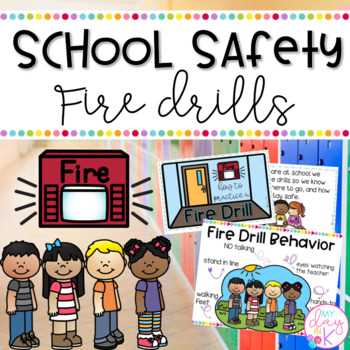
One common misconception is that fire drills are merely an opportunity for students to leave the classroom and take a break from their studies. However, this is far from the truth. Fire drills are conducted to simulate a real emergency situation and allow students and staff to practice their evacuation procedures. They are not intended to be a leisurely break.
2. Fire drills are not necessary in schools
Another misconception is that fire drills are unnecessary and a waste of time in schools. However, fires can and do occur in school buildings, and it is essential that students and staff are prepared to respond in a calm and efficient manner. Fire drills are an important part of emergency preparedness and can save lives in the event of a real fire.
3. Fire drills are always announced in advance
While it is true that fire drills are often announced in advance to ensure that everyone is aware and prepared, this is not always the case. In some situations, fire drills may be conducted without any prior warning. This helps to simulate a more realistic emergency situation and ensures that students and staff are always ready to respond quickly and appropriately.
4. Fire drills are only necessary in older buildings
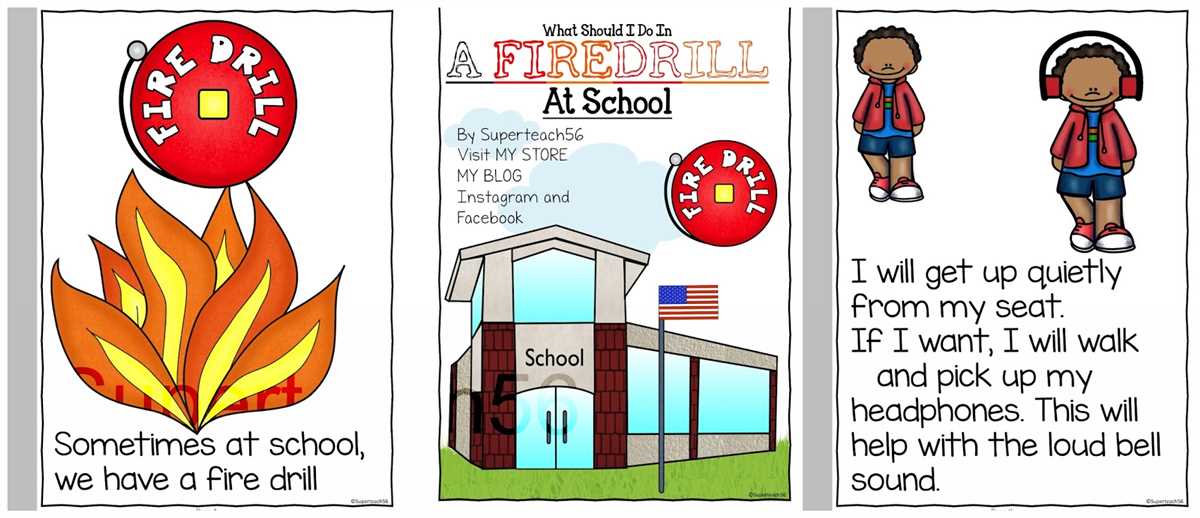
Some people believe that fire drills are only necessary in older buildings that may have outdated safety systems. However, fires can occur in any type of building, regardless of its age or safety features. It is crucial for all schools, regardless of their age or condition, to regularly conduct fire drills to ensure that students and staff are prepared for any emergency situation.
5. Fire drills are not important for younger students
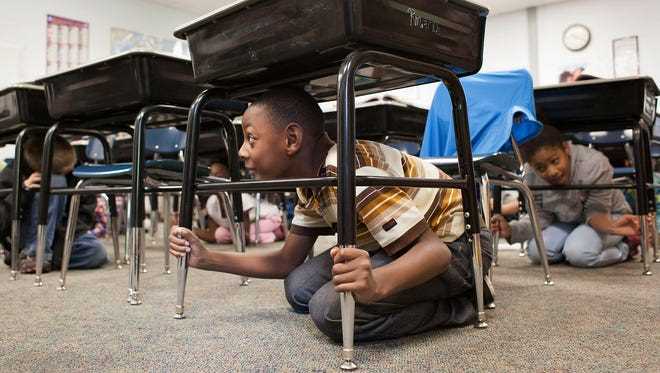
There is a misconception that fire drills are not necessary for younger students, as they may not fully understand the importance of the drill or be able to follow evacuation procedures. However, it is crucial to include all students in fire drills, regardless of their age. By practicing fire drills from a young age, students develop the skills and knowledge necessary to respond to emergencies throughout their lives.
Conclusion
Fire drills are an essential part of school safety protocols and should not be dismissed as unnecessary or unimportant. By debunking these misconceptions, we can better understand the importance of fire drills in preparing students and staff for potential emergencies. Regular practice and preparation can save lives and minimize injuries in the event of a real fire.
FAQ:
Why do schools have fire drills?
Schools have fire drills to practice their emergency evacuation procedures and ensure that students and staff know how to safely exit the building in the event of a fire. This helps to prepare everyone for a real fire emergency.
How often are fire drills held in schools?
Fire drills are typically held at least once a month in schools. The frequency may vary depending on state and local regulations, but the goal is to practice the evacuation procedures regularly to ensure preparedness in case of a fire.
What happens during a fire drill in school?
During a fire drill in school, an alarm will sound to notify everyone that it is a drill. Students and staff will then follow predetermined evacuation routes and procedures to exit the building safely. Once outside, they will gather at designated assembly points until the drill is complete and it is safe to re-enter the building.
What should students do during a fire drill?
During a fire drill, students should remain calm and follow the instructions of their teachers or other staff members. They should quickly and quietly exit the building, using the designated evacuation routes and not using elevators. Once outside, they should proceed to the predetermined assembly point and wait there until the drill is over.
Video:










